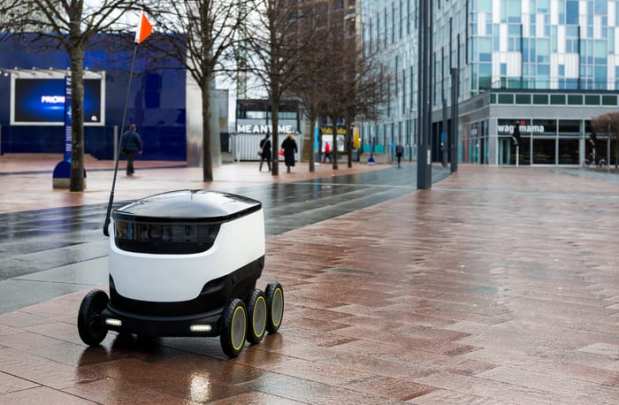MIT Develops Last-Mile Navigation For Delivery Robots

Engineers at MIT have been working on a better way for last-mile delivery robots to find doors or garages, with the goal of improving the time and efficiency of these types of deliveries.
MIT News is reporting that while standard delivery methods use a map that is created ahead of time, actually finding a door or garage is surprisingly difficult without an actual layout map of a house, which would be time-consuming to procure and involve privacy concerns.
The MIT engineers came up with a system that would allow a robot to recognize clues about its environment and understand terms in a semantic way, like “door” or “driveway.” The new semantic labels are meant to help robots recognize things for what they are, instead of just seeing shapes.
“We wouldn’t want to have to make a map of every building that we’d need to visit,” says Michael Everett, a graduate student in MIT’s Department of Mechanical Engineering. “With this technique, we hope to drop a robot at the end of any driveway and have it find a door.”
A robot, for example, would be able to recognize that a road leads to a driveway, which leads to a sidewalk, which would lead to a front door. The process will also allow for the robots to make decisions about the best pathways to their destinations.
“Now we have an ability to give robots a sense of what things are, in real-time,” Everett said.
Jonathan How, professor of aeronautics and astronautics at MIT, is also involved in the project. “Before, exploring was just, plop a robot down and say ‘go,’ and it will move around and eventually get there, but it will be slow,” How said.
The researchers also help the robots to see things in a color-coded way. For example, things that are far away from a goal are shaded darker, and destinations like a door get progressively lighter as the robot gets closer to its destination.
The initiative is partly sponsored by the Ford Motor Company.
